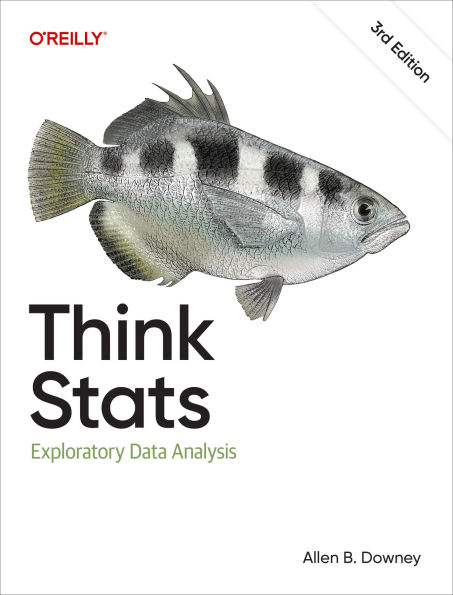Whether you're a data scientist, software engineer, or data enthusiast, you'll get up to speed on commonly used tools including NumPy, SciPy, and Pandas. You'll explore distributions, relationships between variables, visualization, and many other concepts. And all chapters are available as Jupyter notebooks, so you can read the text, run the code, and work on exercises all in one place.
- Analyze data distributions and visualize patterns using Python libraries
- Improve predictions and insights with regression models
- Dive into specialized topics like time series analysis and survival analysis
- Integrate statistical techniques and tools for validation, inference, and more
- Communicate findings with effective data visualization
- Troubleshoot common data analysis challenges
- Boost reproducibility and collaboration in data analysis projects with interactive notebooks
Whether you're a data scientist, software engineer, or data enthusiast, you'll get up to speed on commonly used tools including NumPy, SciPy, and Pandas. You'll explore distributions, relationships between variables, visualization, and many other concepts. And all chapters are available as Jupyter notebooks, so you can read the text, run the code, and work on exercises all in one place.
- Analyze data distributions and visualize patterns using Python libraries
- Improve predictions and insights with regression models
- Dive into specialized topics like time series analysis and survival analysis
- Integrate statistical techniques and tools for validation, inference, and more
- Communicate findings with effective data visualization
- Troubleshoot common data analysis challenges
- Boost reproducibility and collaboration in data analysis projects with interactive notebooks

Think Stats: Exploratory Data Analysis
226
Think Stats: Exploratory Data Analysis
226Paperback(3rd ed.)

Product Details
| ISBN-13: | 9781098190255 |
|---|---|
| Publisher: | O'Reilly Media, Incorporated |
| Publication date: | 06/03/2025 |
| Edition description: | 3rd ed. |
| Pages: | 226 |
| Product dimensions: | 6.90(w) x 9.20(h) x 0.70(d) |
